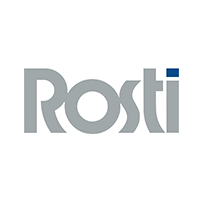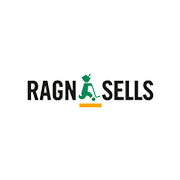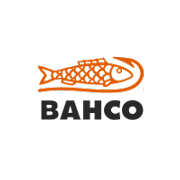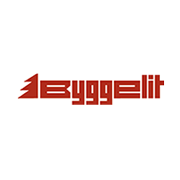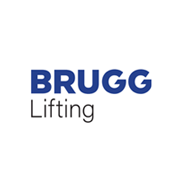When the guys at Rosti are putting their minds into something, its usually big! And this time its MaintMaster. Rosti is a Swedish manufacturing company focused on plastic molding and all kinds of services associated. One of the interesting things is that they are running their customers machines as well as their own machines at the production facility. This means that the maintenance department must maintain both their own machines as well as the customer machines and equipment located at Rosti in Gislaved.
Rosti specialises in advanced technology and automation.
The employees at Rosti find the work exciting because of the opportunity to work with modern machines, high-tech automation, and the challenge of 24/7 production. They also have a lot of contact with customers, which makes the work interesting. The employees are excited about developing machines, improving the production process and working with other companies. The culture at Rosti is built on continuous improvement and thrive to work with the most advanced technology to deliver the best results to their customers. Rosti is always looking for ways to improve and make the production process more efficient and cost-effective. The team at Rosti is dedicated to providing the best service to their customers and working together to achieve success.
Rosti decided to implement MaintMasters maintenance software in order to better control costs and hours spent on customer machines and equipment. This allows for better communication with customers and discussions about improvements and spare parts management. Previously, all of this was done manually in Excel, but it did not provide the necessary tracing possibilities. MaintMaster allows everyone to register their work, so that the company can see where they are spending their time and resources. This is important for Rosti to improve their customer relationships by keeping track of everything that happens at the customer's machines and equipment and to track and see what is causing problems at Rosti and improve their processes.
The importance of tracking
Rosti, understands the importance of keeping track of everything that happens at customer machines and equipment in order to play an important role in their improvements and product development. This is vital for maintaining long-lasting customer relationships. Additionally, by keeping track of what is causing problems within the company, Rosti is able to improve their processes and maintain an improvement-oriented mindset. Without the use of MaintMaster maintenance software to track and register work, Rosti would not be able to effectively communicate with customers, identify and solve problems, or improve their operations.
Rosti implementerd MaintMaster in 2019 and and a project group was created to start the MaintMaster courses "System Introduction" and "MaintMaster as a tool". After completing the courses, the company was able to start building up the object tree in MaintMaster on their own and roll out the system in February 2020. During this period, all the production staff, technicians and quality assurance personnel were educated to use MaintMaster and were able to follow up on their tasks in MaintMaster, which came in handy due to the restrictions caused by the COVID-19 pandemic. Now Rosti has been using MaintMaster for more than 2 years and it has been a valuable tool for the organization to improve their processes and communication with customers.
Approximately 60 to 65 employees have received MaintMaster education, with training tailored to their specific roles and responsibilities. The company has also extended this education to external partners, ensuring that all necessary parties are familiar with the system and can effectively use it. This wide-spread education on the use of MaintMaster has allowed the company to effectively implement and utilize the system to improve their processes and communication with customers.
Project manager from MaintMaster
Rosti collaborated with MaintMaster Project Manager Mikael Andersson to introduce and implement the MaintMaster system. The collaboration was successful despite some initial challenges with scheduling and getting everyone aligned on the best approach to setting up the system. The team found Mikael's experience in maintenance to be a valuable resource in finding the right processes quickly and efficiently. Mikael's background in maintenance has been a big difference compared to other implementation projects and his support and follow-ups to questions were quick and effective. Additionally, Mikael has helped set up the project according to the international Maintenance Standard EN SS 13306 which has been a bonus for the company. Overall, Rosti found the collaboration with Mikael to be successful and it helped the company to put their thoughts and processes into the system in the best way possible.
According to Magnus Emanuelsson at Rosti, the process of introducing and implementing the MaintMaster system was not particularly difficult. One effective method that was used was to draw the processes before setting them up in MaintMaster, to ensure that they would work in real life. By involving everyone who would be working with the system and asking for their opinions, the team was able to make sure that everyone was on board and that any suggestions or improvements could be introduced. Additionally, the team found that it was easy to make changes if needed, as MaintMaster allows for changes to be made by the team themselves. Overall, the process of introducing and implementing the MaintMaster system at Rosti was smooth and effective.
Involve more people
The team at Rosti found that one thing they would do differently is to involve more people in the process and show the benefits of MaintMaster to more people at the company. They also suggest that more networking between different MaintMaster customers should be aimed for. Overall, the team at Rosti found that the collaboration with MaintMaster was successful.
“ There are two facilities within Rosti that will start their TPM Journey towards the upcoming autumn. We call these measures “The Rosti Way”. It is to be expected that MaintMaster will be an important support and gear in this whole process. Especially with the maintenance standard and the educations that you offer, I believe that MaintMaster will be an important part of that journey. It is very good position to be part of initiating this process here at Rosti and MaintMaster is a great tool that is even capable of supporting TPM activities. We expect it to be the standard when we are done”. - Says Mikael Landahl

